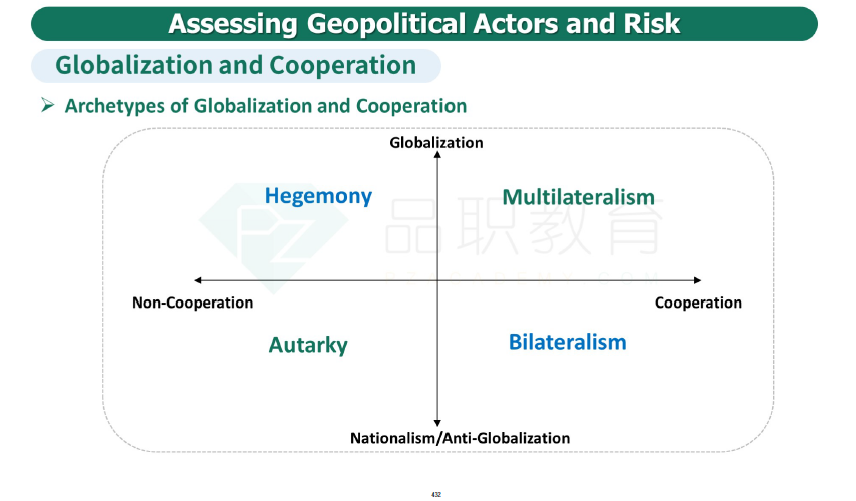NO.PZ2023010401000171
问题如下:
For the following contrasting pairs of archetypes of globalization and cooperation, which one reflects the greatest differences in country behavior?
选项:
A.Bilateralism vs. autarky
B.Multilateralism vs. autarky
C.Multilateralism vs. hegemony
解释:
Multilateralism describes countries that participate in mutually beneficial trade relationships and extensive rules harmonization. Autarky describes countries seeking political self-sufficiency with little or no external trade or finance. In the Exhibit 6 display of these behavior patterns, these choices are most widely separated on both the globalization and cooperation continuums.
A is incorrect because bilateral or regional approaches describe those countries leveraging regional trade relationships and may face the world as a group. Bilateralism shares with autarky a bias against globalization. These approaches diverge, however, regarding cooperation, with autarky being more non-cooperative.
C is incorrect because multilateralism describes countries that participate in mutually beneficial trade relationships and extensive rules harmonization. Hegemony represents countries exerting political or economic influence of others to control resources. Multilateralism shares with hegemony an inclination towards globalization, but diverges from hegemony regarding cooperation; hegemony is more non-cooperative.
中文解析:
多边主义是指各国参与互惠互利的贸易关系和广泛的规则协调。自给自足指的是那些寻求政治上自给自足,很少或根本没有对外贸易或融资的国家。在图6中显示的这些行为模式中,这些选择在全球化和合作连续体上都是最广泛分离的。
A是不正确的,因为双边或区域方法描述的是那些利用区域贸易关系的国家,它们可能作为一个整体面对世界。双边主义和闭关自守都有反对全球化的偏见。然而,在合作方面,这些方法是不同的,而独居更是非合作的。
C是不正确的,因为多边主义描述的是参与互利贸易关系和广泛的规则协调的国家。霸权是指一国利用他国的政治或经济影响来控制资源。多边主义与霸权主义有共同的全球化倾向,但在合作方面与霸权主义存在分歧;霸权更不合作。
老师能否翻一下题目谢谢




